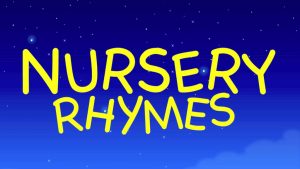
Nursery rhymes should be taught to children from the first year of life, even though the child may not be speaking yet. Nursery rhymes are an import part of a preschool child’s life and education. The rhymes are as important to learn as learning letters, numbers, and colors.
Baby Bounce Rhyme What it Teaches
We’re going to look at several rhymes. The First one is called “Baby Bounce.” I was unable to find out who wrote it and when, but it does seem to originate in London, England. It’s about the Grand Old Duke of York’s 10,000 soldiers. This rhyme is probably best told to boys from age 0 to 5. “Baby Bounce ” teaches babies about language sounds and social interaction as you take your fingers and make them march across a table.
Old Favorites
The best kind of rhymes are the ones that even Grandma and Grandpa grew up with . One such rhyme is the “Itsy_Bitsy_Spider.” It originated in 1910 when the song was first published as “The Spider Song,” in Camp and Camino in Lower California. Children learn through the finger motions of the spider up the water spout motor skill development.
One, Two, Buckle My Shoe
One, Two, Buckle My Shoe is an old favorite that dates back to 1808 in England when many shoes had buckles on them. The song not teaches number skills that are important to child development, children can also learn numbers and rhymes. Two rhymes with shoe Three, four shut the door. Door rhymes with with four, and so on. The real benefit is that children learn about paying attention to another person and learning from them. This skill is important when the child grows and enters elementary school.
Topics to Explore
One, Two Buckle my Shoe can explore the use of numbers, rhyme, and also how things work like you can shut a door and pick up a stick. Rhymes can be dressed up with hand puppets. Many videos are found online about rhymes, bringing the meaning to life. Favorite rhymes can inspire arts and crafts in which children make figures of their favorite rhymes like “Mary Had a Little Lamb ” and “Ba ba Black Sheep,” using cotton balls and glue to make the lambs and sheep. Children can put on little skits using lamb costumes of white T-shirts and sheep masks, and farmer costumes.
History of the Rhyme
Rhymes are said to be about ancient English history that was written about to memorialize them. Many people are not taught the history behind each rhyme because unfortunately, the history is considered unpleasant and would ruin the fun experience of the rhymes for others. In time, the rhymes were reworked to be positive. Jacob Abbot and Samuel Goodrich, back in the late 19th century, set out to revise the rhymes. Rhymes date back to the middle of the 16th century and didn’t have music. In time, music was set to rhyme to enhance the learning and growth experience.